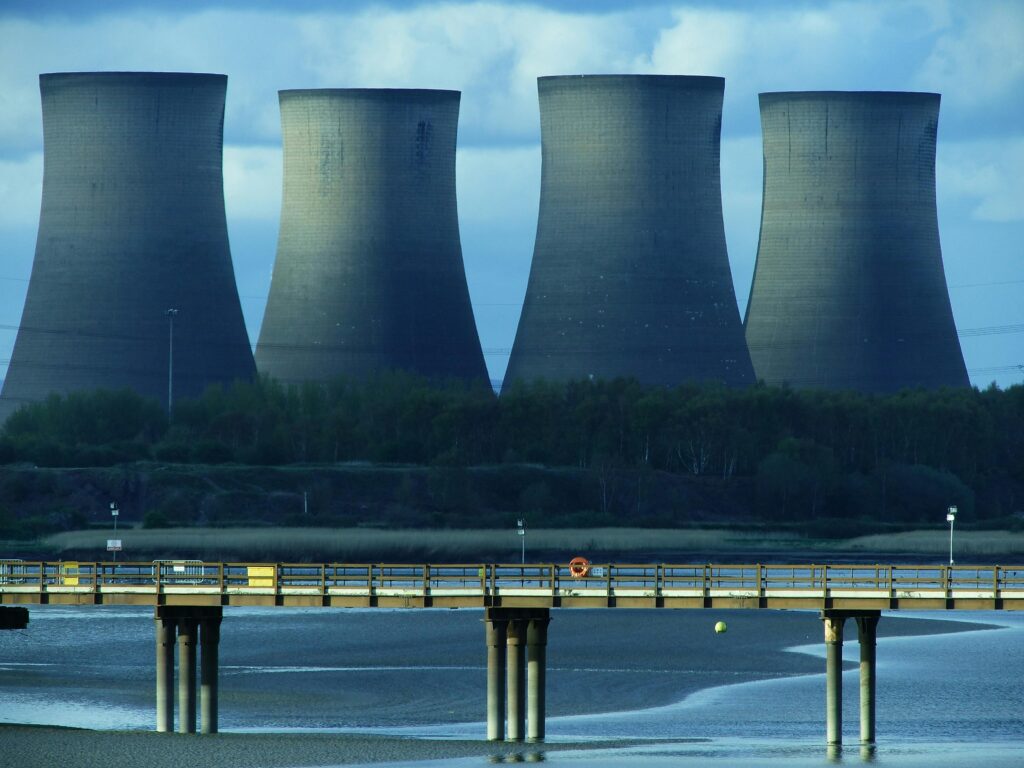
The Renewed Focus on Energy Security and Decarbonization
When Russia invaded Ukraine in 2022, Europe faced an uncomfortable truth: its deep reliance on imported fossil fuels, particularly from aging coal power plants, posed a substantial threat to national security and economic stability. Countries like Germany and Italy found themselves particularly vulnerable, underscoring the urgent need for greater energy security and independence. As a result, nuclear power—which had been largely sidelined due to concerns over high capital investment, lengthy construction time, and negative public perception—quickly re-emerged as a critical solution for achieving stable, sovereign energy sources. For investors, this moment signaled a pivotal shift, opening new avenues for investing in nuclear amid a rapidly changing global energy environment.
Global Commitment and Regulatory Support for Nuclear Energy

CEO
This shift became especially apparent at the COP28 climate summit in Dubai, where 20 countries, including the U.S., Canada, Japan, and the UK, pledged to triple global nuclear energy capacity by 2050. This ambitious goal significantly exceeds previous forecasts made by prominent energy bodies, such as the International Energy Agency (IEA). The commitment highlights a substantial shift in global sentiment, recognizing nuclear not just as viable but essential for achieving aggressive climate targets and facilitating the global clean energy transition.
Moreover, the official recognition of nuclear energy as a clean energy source under frameworks like the European Union’s Sustainable Finance Taxonomy has profoundly reshaped the energy landscape. This classification makes nuclear projects eligible for sustainable financing, unlocking new capital from institutional investors who prioritize environmental, social, and governance (ESG) criteria. For investors, this regulatory endorsement represents a significant alignment of financial interests, government policies, and broader civil society goals, thereby significantly boosting the attractiveness of nuclear energy investments.
As global priorities converge around decarbonization and securing the future energy market, nuclear energy is firmly back in the spotlight—presenting compelling opportunities for investors seeking both sustainable impact and strong returns.
Why Nuclear Energy Makes Investment Sense
Reliability and Baseload Power for Investing in Nuclear
When considering energy investments, reliability is paramount. Nuclear energy consistently delivers on this front, operating at an impressive capacity factor of around 92%. To put this in perspective, nuclear power plants run nearly uninterrupted throughout the year, providing continuous baseload power crucial to maintaining stable grid power. This stability contrasts sharply with intermittent renewable energy sources like wind and solar, whose outputs depend heavily on weather conditions and often require supplementary battery energy storage solutions.
Moreover, the Energy Return on Investment (EROI)—the ratio of energy produced to energy invested—strongly favors nuclear. Compared to other forms of electricity generation, nuclear boasts a significantly higher EROI, meaning it generates more usable energy per unit of energy invested. This efficiency translates directly into a competitive cost of electricity, making investing in nuclear an attractive opportunity.
Safety and Sustainability Misconceptions
Despite widespread misconceptions, nuclear power generation is among the safest and most sustainable forms of energy available today. In fact, nuclear ranks second only to wind in low greenhouse gas emissions across its lifecycle—surpassing solar, hydropower, and traditional fossil fuels like natural gas. By investing in the nuclear sector, you’re aligning your portfolio seamlessly with environmental sustainability and the increasing global emphasis on achieving net-zero carbon footprints.
Additionally, nuclear energy’s high energy density makes it considerably less resource-intensive compared to renewable infrastructure. While wind and solar projects require extensive mining of natural resources, nuclear plants demand fewer raw materials, significantly reducing their environmental footprint. This efficiency helps mitigate risks associated with supply chain disruptions, commodity price volatility, and resource scarcity, ensuring that energy production remains stable and predictable—critical factors for heavy industries dependent on uninterrupted power.
For investors evaluating opportunities in the evolving energy market, these attributes make nuclear energy not only viable but essential within the future global energy landscape.
Geopolitical Risks and the Case for Investing in Nuclear
Recent geopolitical developments have vividly highlighted the inherent risks of relying heavily on imported energy sources. Russia’s invasion of Ukraine provided a stark lesson in how geopolitical tensions can rapidly disrupt global energy markets, leaving even economically robust nations vulnerable. In response, countries worldwide have begun prioritizing energy security and autonomy, shifting their focus toward secure, domestically controlled sources—chief among them being nuclear energy.
For the United States, the geopolitical stakes are particularly high. Historically, the U.S. nuclear industry has depended significantly on imported enriched uranium, with Russia supplying approximately 27% of America’s total uranium imports. This dependency became problematic in November 2024, when Russia enacted an export ban on enriched uranium to the United States, underscoring America’s critical need to diversify its uranium sources. To mitigate this vulnerability, the U.S. is now urgently expanding partnerships with reliable allies, such as Canada and Australia, to ensure stable access to natural uranium supplies, essential for consistent energy production.
Adding further complexity to the nuclear landscape is China’s rapid expansion in nuclear power generation capacity. Unlike the fragmented U.S. market, characterized by a significant regulatory burden and higher capital investment, China’s state-backed approach and streamlined regulatory processes allow it to scale nuclear projects swiftly and cost-effectively. This advantage has major implications for global competition in the broader energy market.
To remain competitive, the United States must address its historical inefficiencies through standardized reactor designs and accelerated investment in innovative next-generation advanced reactor designs, such as modular reactors and Small Modular Reactors (SMRs). This strategic shift is crucial for maintaining leadership within the global energy landscape and securing a robust, resilient future energy market.
Addressing Industry Challenges with Innovation
Historical Industry Inefficiencies
Historically, investments in the nuclear energy sector—especially in the United States—have faced significant hurdles due to a lack of standardized nuclear reactor designs. Rather than adopting a unified approach, U.S. energy companies have frequently chosen bespoke, single-reactor designs, leading to soaring costs, extended construction time, and substantial project delays. A prime example of these inefficiencies is the recently completed Vogtle Units 3 and 4 in Georgia, where initial budgets ballooned from approximately $14 billion to over $30 billion. Such overruns underscore the urgent need for innovation and standardization to restore investor confidence, mitigate regulatory burden, and enhance overall project viability within the nuclear industry.
Promise of Small Modular Reactors (SMRs)
The emergence of Small Modular Reactors (modular reactors or SMRs) marks a turning point, offering a practical solution to the industry’s longstanding challenges. SMRs deliver significant advantages in safety, affordability, and flexibility. Due to their smaller size, standardized advanced reactor designs, and modular construction methods, SMRs require considerably lower capital investment and offer accelerated build times compared to traditional reactors, which typically take 15-20 years to complete.
Among the most promising SMRs are the next-generation molten-salt reactors, recently approved by the Nuclear Regulatory Commission (NRC). These Generation IV advanced reactors feature groundbreaking safety enhancements and simplified management of nuclear waste, addressing public concerns about radioactive waste disposal. Additionally, molten-salt SMRs generate substantial amounts of nuclear heat, producing heat in excess that can be utilized efficiently in various industrial processes. With their compact footprints, reduced environmental impact, and suitability for integration within the broader clean energy landscape, molten-salt SMRs represent both a leap forward in nuclear safety and an attractive opportunity for investing in nuclear innovation.
Capturing the Investment Opportunity
Key Areas for Investors
As nuclear energy regains prominence in the global energy landscape, strategic investment opportunities are becoming increasingly attractive. To position your portfolio effectively within this emerging energy frontier, consider focusing on the following three key areas:
1. Uranium Mining and Commodities
- The uranium market is experiencing a structural supply deficit, driven by underinvestment in mining and exploration over the past decade. With uranium prices recently surpassing critical thresholds of $75 per pound and trending higher, the market fundamentals strongly support a bullish outlook.
- As global nuclear power generation expands —especially with countries committed to ambitious growth targets—uranium demand will inevitably outpace supply, placing upward pressure on prices and presenting lucrative opportunities for investors who enter early.
2. Utility Companies with Nuclear Exposure
- Nuclear-focused utility companies offer investors attractive stability and defensive characteristics. Historically, these companies have demonstrated resilience, maintaining steady revenue streams even amid economic downturns and market volatility.
- With renewed governmental support, favorable government policies, and rising global energy demand driven by megatrends such as artificial intelligence and electric vehicles, utilities operating nuclear facilities are poised to deliver consistent long-term returns. These investments can be valuable anchors within your portfolio, balancing risk and enhancing overall stability.
3. Innovative Nuclear Technology Providers (SMRs)
- Companies pioneering the next generation of nuclear technology, particularly Small Modular Reactors (SMRs), offer significant growth potential. Innovators like NuScale Power and TerraPower are developing groundbreaking reactor designs that promise enhanced safety, lower costs, and shorter construction time compared to traditional reactors.
- Investing early in these innovative firms can offer substantial upside, especially as their technologies achieve broader regulatory approval and commercial adoption. With support from influential investors, governments, and tech giants, these companies are strategically positioned to reshape the nuclear industry and generate attractive returns.
By strategically allocating capital across these areas—uranium mining, nuclear utilities, and next-generation reactor technology—you can effectively capture the substantial growth opportunities emerging from the global nuclear renaissance. As the energy landscape continues to evolve, a proactive approach to investing in nuclear will serve to both diversify your portfolio and align with future market dynamics.
Conclusion
The resurgence of nuclear energy investment is underpinned by powerful global trends, including decarbonization, AI-driven energy demand, and geopolitical reshoring. Despite historical inefficiencies, technological breakthroughs in SMRs and increasingly favorable regulatory shifts position nuclear energy as an essential part of a diversified, resilient energy strategy. For investors, nuclear energy offers strategic portfolio diversification, robust defensive qualities, and attractive growth prospects. The window to capture early-mover benefits is open, particularly as market awareness of nuclear’s transformative potential expands.
Interested in exploring nuclear investment opportunities further? Contact us at Tiempo Capital to learn how nuclear energy can strategically diversify and strengthen your investment portfolio in a rapidly evolving global energy landscape.
If you’re looking for more insights, you can explore our full library of articles. Click here for content related to equities or here for in-depth guidance on investments.
Download our report:
This material is for informational purposes only and does not constitute financial, legal, tax, or investment advice. All opinions, analyses, or strategies discussed are general in nature and may not be appropriate for all individuals or situations. Readers are encouraged to consult their own advisors regarding their specific circumstances. Investments involve risk, including the potential loss of principal, and past performance is not indicative of future results.
Sources:
“Webcast: Why Nuclear Energy is Making a Comeback – And How Investors Can Profit From It” (October 2024), BCA Research, Guy Russell & Jeremie Peloso, taken from https://www.bcaresearch.com/marketing/why-nuclear-energy-making-comeback-and-how-investors-can-profit-it
“The Future Of Nuclear Energy And AI” (December 2024) Alpine Macro, Innovation and Themes Strategy, taken from https://alpinemacro.com/research-alpine/
“US Nuclear Energy: Decaying Dominance” (September 2024) BCA Research, Multiple authors, taken from https://www.bcaresearch.com/
“Nuclear-Friendly Megatrends” (September 2024) BCA Research, Multiple authors, taken from https://www.bcaresearch.com/
“A Primer On Nuclear Energy”, (January 2024) BCA Research, Multiple authors, taken from https://www.bcaresearch.com/